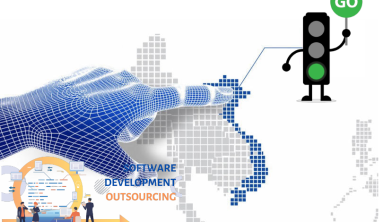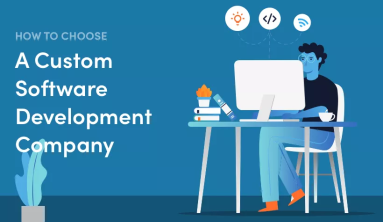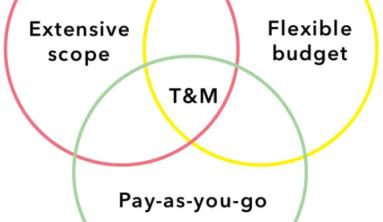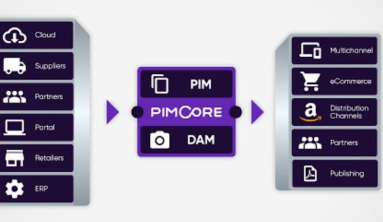To choose a correct engagement model for your project is one of the most critical things which must figure out soon. It is like deciding between Agile software development and Waterfall.
However, the engagement model has far more significant impacts on your project than the methodologies.
In this article, I will discuss different engagement models along with their advantages and disadvantages.
I will also guide you to select the right model for your project. So, before we dive in, let’s see what exactly are the engagement models.
What is an engagement model?
In simple terms, a client engagement model is a structured design or plan which decides the basis of the collaboration between the client and the software development company.
The engagement model focuses on needs, wants, and interests of the client along with ensuring the level of control, flexibility, and responsibility.
Engagement models are of various kinds since there’s no one way of collaboration. It becomes imperative to choose the appropriate engagement model as it aligns the goals to bear common outcomes along with adopting the suitable pricing models.
Various factors lead to the selection of engagement models. These factors can be objective such as the company’s experience, record, reputation, and cost of app development.
Similarly, it can be subjective as well, such as the client’s experience with the company.
We saw what engagement models are and what are the factors which lead to its selection. Now, let’s have a look at the different types of engagement models.
So, the three most popular engagement models used in software development are Fixed Price, Time & Material, and Dedicated Team.
Fixed price model
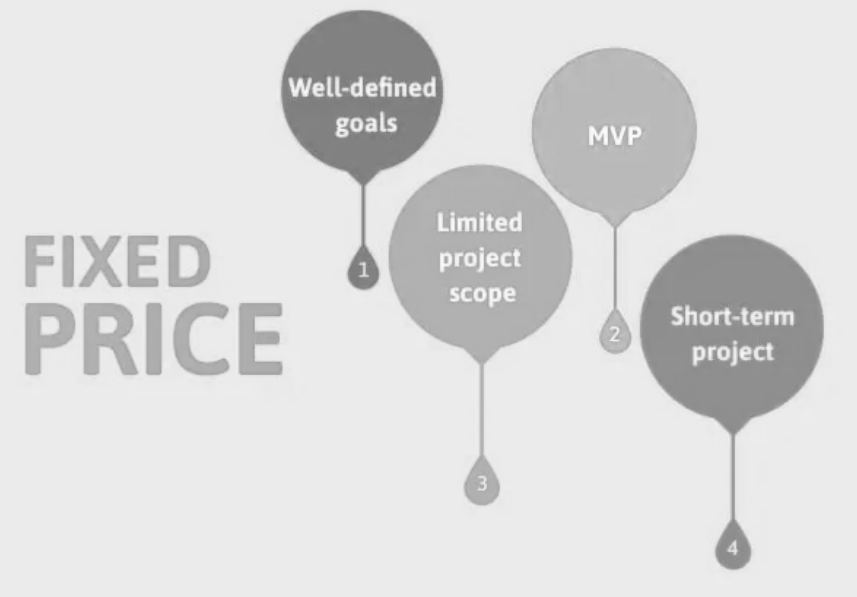
How it works:
As the name suggests, this model is a fixed-price contract where the software development team must deliver the project within a predefined sum which is agreed by both the parties.
This model is cost-effective for clients since they don’t need to pay anything out of the agreed price.
However, this process is tricky for the software development team. It’s because if you come with any change in the scope while the project is already underway the development stage, then the software company has to compensate for the excess amount by curtailing their profit margin.
This could quickly turn the business relationship sour. After then it will merely become a risk management venture where your focus would be to minimize the risk rather than completing the business goals.
The situation becomes worse when you and the provider’s PM are at odds when there’s a change in scope.
So, one thing is clear that making changes is a big no in this engagement model. This model is suitable for short-term projects where the requirements and specifications are rigid and predictable.
When you should use:
- For short-term projects with limited project scope.
- Projects that have well-defined goals, vision, workflows, and results which are unlikely to change for the course of development.
- If you want to test out a new software provider before you hire them as your permanent dedicated developer.
- When both in-house and external teams have established an environment of collaboration in which they are aware of each other’s capabilities.
- For MVPs.
Pros
- Its most significant advantage is its predictability. With this model, you can determine the expenses of 1-3 months before the start. This model requires clear deadlines which assist the developers in completing the project on time.
- Since the project is divided into individual tasks, the workflow of the project is simple and easy to comprehend.
- More clearly defined specifications and requirements with lots of details gives a clear view of the project.
- The overall cost never exceeds the budget.
- For MVPs.
Cons
- No scope for flexibility.
- If you don’t communicate your requirements correctly, then the delivered product won’t same as expected.
- Any change in the scope would cause a change in the total cost and this change would be compensated by the service provider’s end.
- It involves face-to-face meetings and discussions before the start of the project.
Time & material
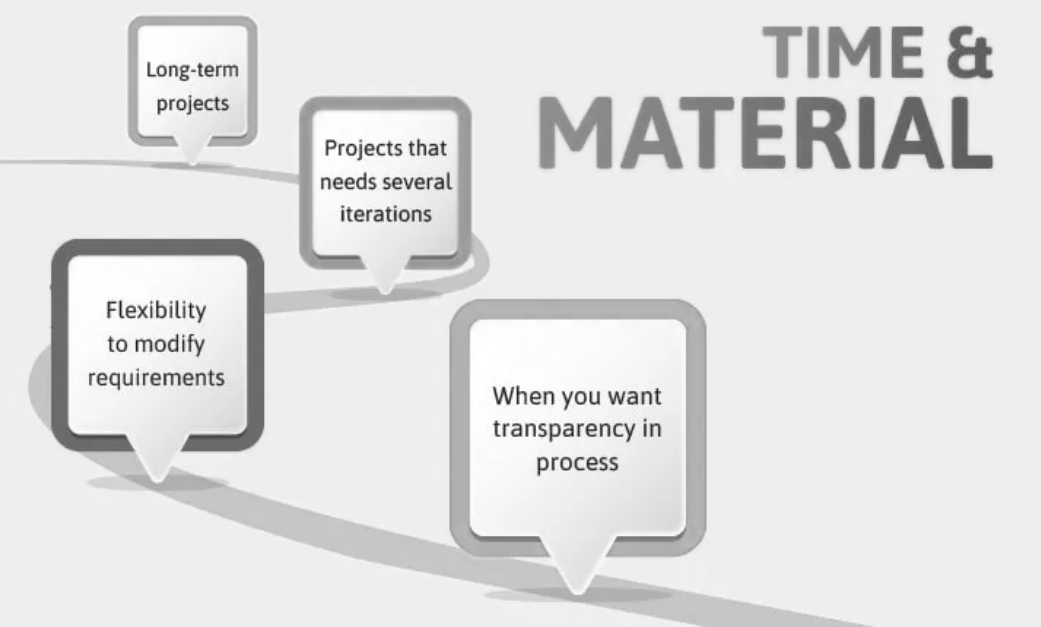
How it works:
In this model, the cost of development depends on the no. of resources & time used by the development company on your project. It’s important to note that the client pays for the total time required for the development of a task rather than the time when they chill.
As a customer, it becomes crucial to provide the scope of the project and to oversee it. Clearer is the requirements defined; faster will be the project delivered to you. On the contrary, if your requirements are not precise, then it will consume more time to re-work.
In case, if you fail to provide the precise definition of your requirements, then you have to pay some extra bucks as you’re paying based on a timely basis in which the rates can be defined as per hourly, daily, or weekly basis.
When you should use:
- Long-term projects with continually evolving and unclear requirements.
- When you want enough flexibility to modify your requirements and to vary workload.
- Execution of complex projects that needs several iterations.
- When you want transparency between you and the development team.
Pros
- It offers greater flexibility as you can make changes without thinking about the budget.
- This model is of low risk, that is it has a flexible and negotiable budget which is a win-win game for both the parties.
- This model allows you to proceed with each iteration until you have a solid MVP rather than planning everything.
Cons
- There is low budget control as the overall cost can exceed the expected budget if you request additional features.
- It requires full-fledged involvement from your side which includes spending much time in the communication with the development team.
- If you suggest numerous changes, then there could be a delay in the release date.
Dedicated team
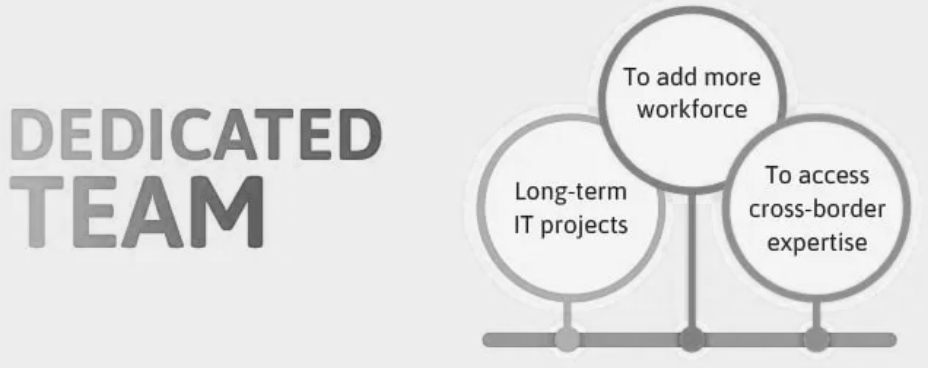
This engagement model eliminates the drawbacks of both systems as you can retain the project management control. In this, the service provider will take care of infrastructure, recruitment, and administrative support for your team.
They monitor the performance and ensure that your team has the right mix of developers. The team is “yours” by all terms. They will report to your company and will also comply with your corporate policies & culture, development practices and methodologies, workflow tools, management style, and technical platform.
This method is best suited for the Offshore Software Development Company due to its flexibility and scalability.
When to use:
- For long-term IT projects with original goals and rapidly changing scopes.
- Adding more workforce to set-up an offsite team as strong as your in-house team.
- When you want to access cross-border expertise and knowledge sharing.
Pros
- It offers a great deal of flexibility as you can change the scope of the project at any stage.
- You can access the expert brains across the borders and learn new tips of the trade.
- With this mode the real-time check on the progress is possible.
- You have the total control over the resources assigned for the development of your project.
- The service provider takes care of aspects such as recruitment, infrastructure, administrative support, and resources which saves a lot of your money.
Cons
- You must consider process planning and task allocation for every member of the team.
- There’s a possibility of a difference of opinion if the project has both in-house developers and the dedicated ones.
- With this mode the real-time check on the progress is possible.
- You might have to invest more time in communication, negotiation, and software development.
Comparison chart for three engagement models
| Dedicated Team | Time & Material | Fixed-Price | |
|---|---|---|---|
| Size of Project | Large | Medium to large | Small |
| Duration | Long | Average to long | Short and average |
| Client’s control | High | Medium | Low |
| Pricing | Fixed for each team member per month | Fixed on hourly, daily, or weekly basis | Fixed-price for a project |
| Budget | Highly flexible | Moderately flexible | Fixed |
| Change requests | Possible during project implementation | Possible during project implementation | Possible after project completion |
| Time-frames | Estimated | Incremental | Predefined |
| Team scalability | Moderate | High | Low |
| Dedicated resources | Highly scalable | Not assigned | Assigned |
| Scope of work | Large | Small to medium | Medium |
| Requirements | Evolving | Evolving | Defined |
| Reports | Daily reports | Daily reports | NO |
| Technology Stack | Flexible | Situational | Pre-planned |
Why dedicated is the best engagement model for offshore development
We compared all the three methods and discussed its pros and cons. However, if there’s an engagement model that stands out among all, then it’s undoubtedly the dedicated team model.
Many factors and benefits make this as the best model for Offshore development, let’s see them one by one.
Hire the best talent from around the world
The dedicated model offers you with a vast pool of talent from around the world. You can choose experts in fields such as Laravel, Angularjs, PHP, .NET, Python, and many more from any country.
It also gives you the option to increase or decrease the team size which helps in optimizing the operational cost.
Slash your overheads
Whenever you hire cloud development team for any project then you don’t need to worry about the aspects such as infrastructure, hiring, support, software, hardware, and even office space as all of it will be provided by the outsourcing vendor.
It allows you to shift your focus from these additional tasks to your primary objectives.
Pass around legal boundaries
The members of your dedicated team might come from different corners of the world serving different technical needs.
Irrespective of that, this model saves you from any legal issues which may include laws of the land of different countries, government clearances, company registration and taxes.
Accountability
The outsourcing company is accountable to keep the track on the team’s performance. They ensure that all the team members are working under your instructions and the company’s goals.
In case of any goof-ups, they will directly report it to you so, that you can take the appropriate actions.
Staff management
The dedicated team working for you will be in a contractual agreement with the outsourcing vendor. This means that the outsourcing vendor will manage all the HR related issues.
Whether it is employee benefit, employee leave, salary hike, annual bonuses, insurance, or medical allowances, everything will be taken care by the outsourcing vendor.
Save time and money
If you’re looking to save your time and money then dedicated engagement model is the best option. It’s the best cost-effective method since the outsourcing vendor provides most of the services.
Moreover, in the dedicated model, you can directly hire a well-trained employee who would save your time and money for the training of fresher of a developer working for a different technology.

Conclusion
So, we saw what an engagement model means and what are its types. We discussed in detail about each type which included the pros and cons, cost, and the type of projects which are best suited for that model.
In the process, we found out that Fixed-price model is the most rigid one and you might like to go with it only when you have a short-term project.
On the other hand, Time & material offers greater flexibility than the fixed-type. However, it has it cons related to cost, as the cost can increase dramatically if there is a change in scope.
It leaves us with the dedicated team model which in my opinion is the best model if you have a long-term project. The fact that you will have a dedicated team only working for your project is a huge bonus.
Moreover, you can control the team directly and save your overhead costs as the outsourcing vendor provides you with a team, office space, software, hardware and many more.
I hope this article helped you to understand the different types of engagement models and might have helped you to make the right decision.

